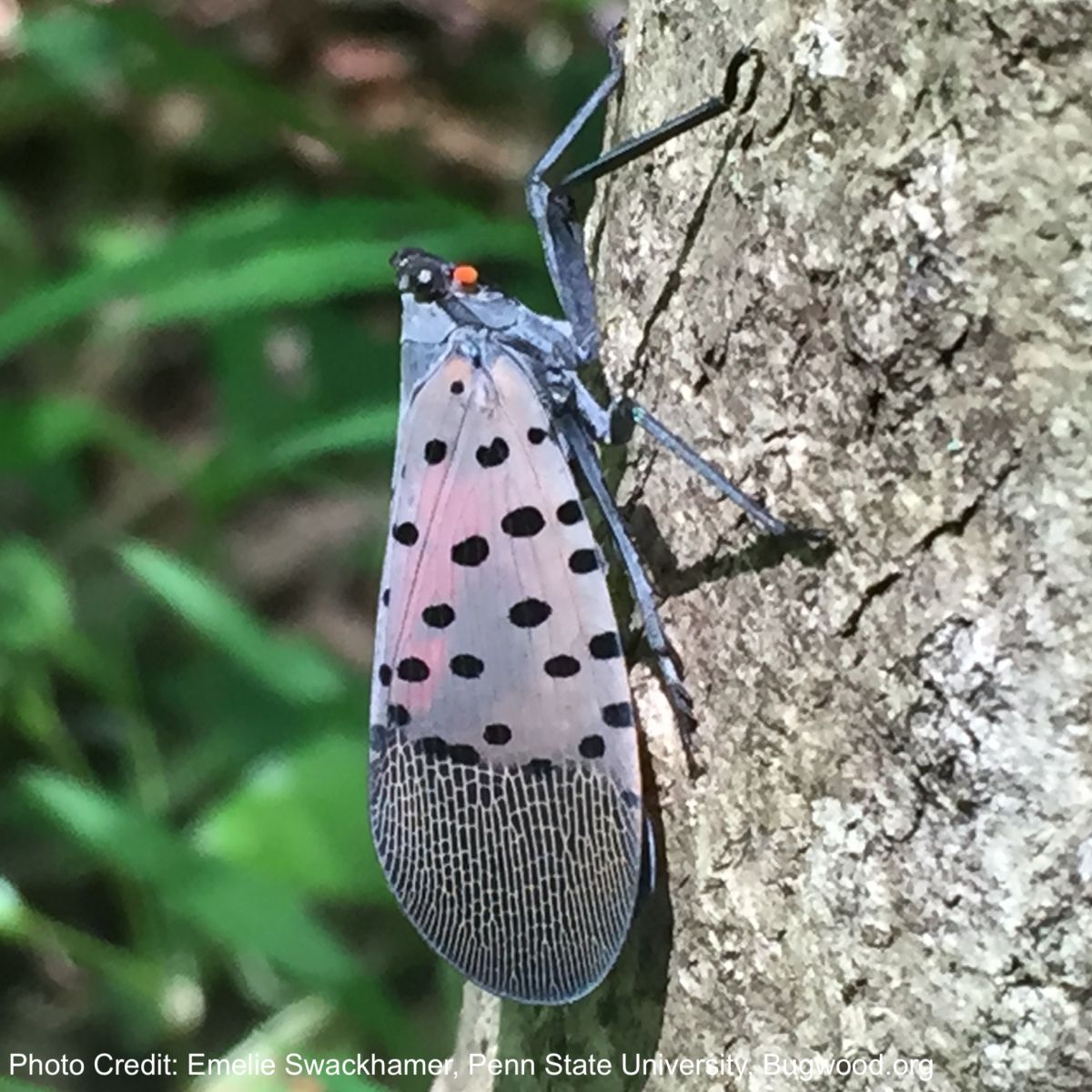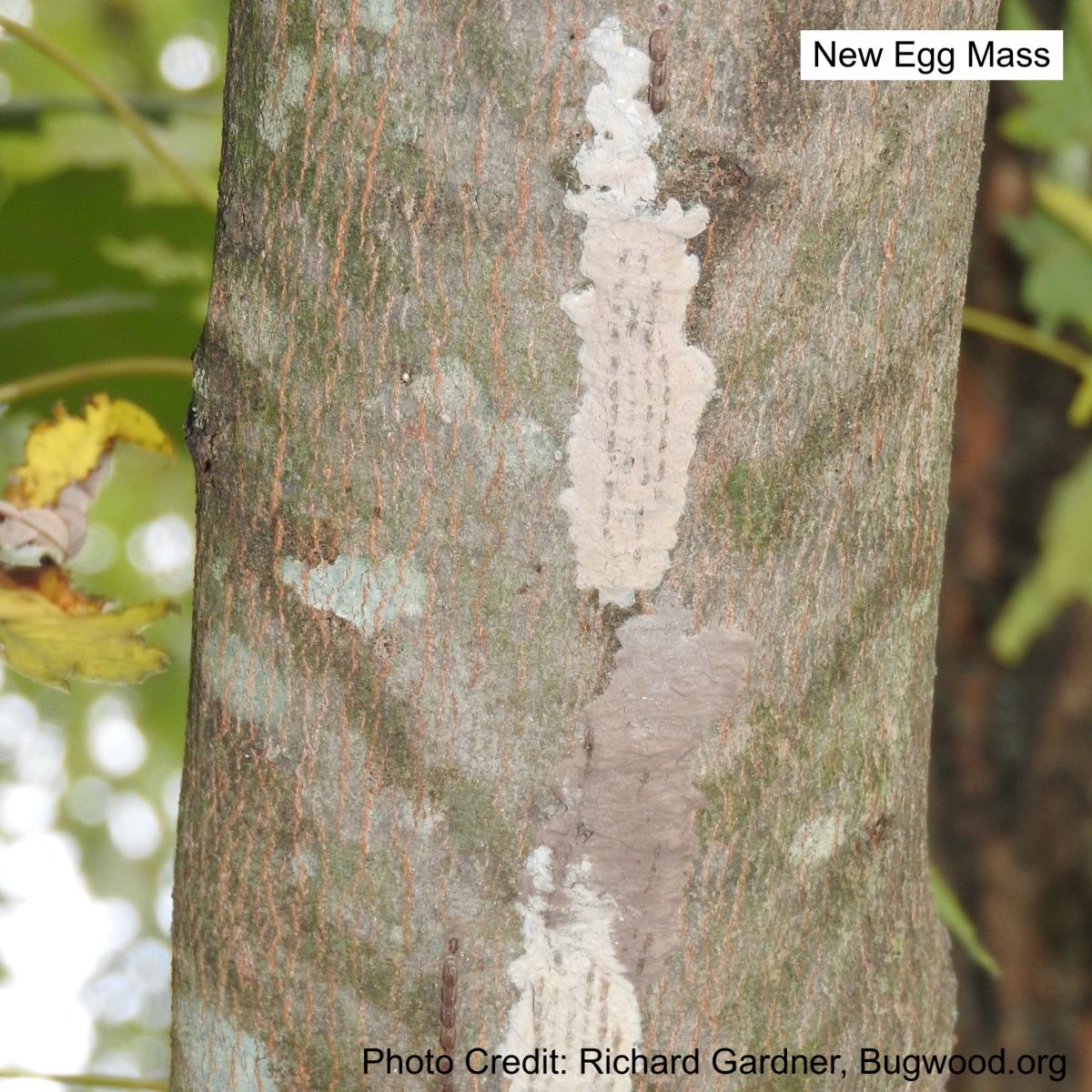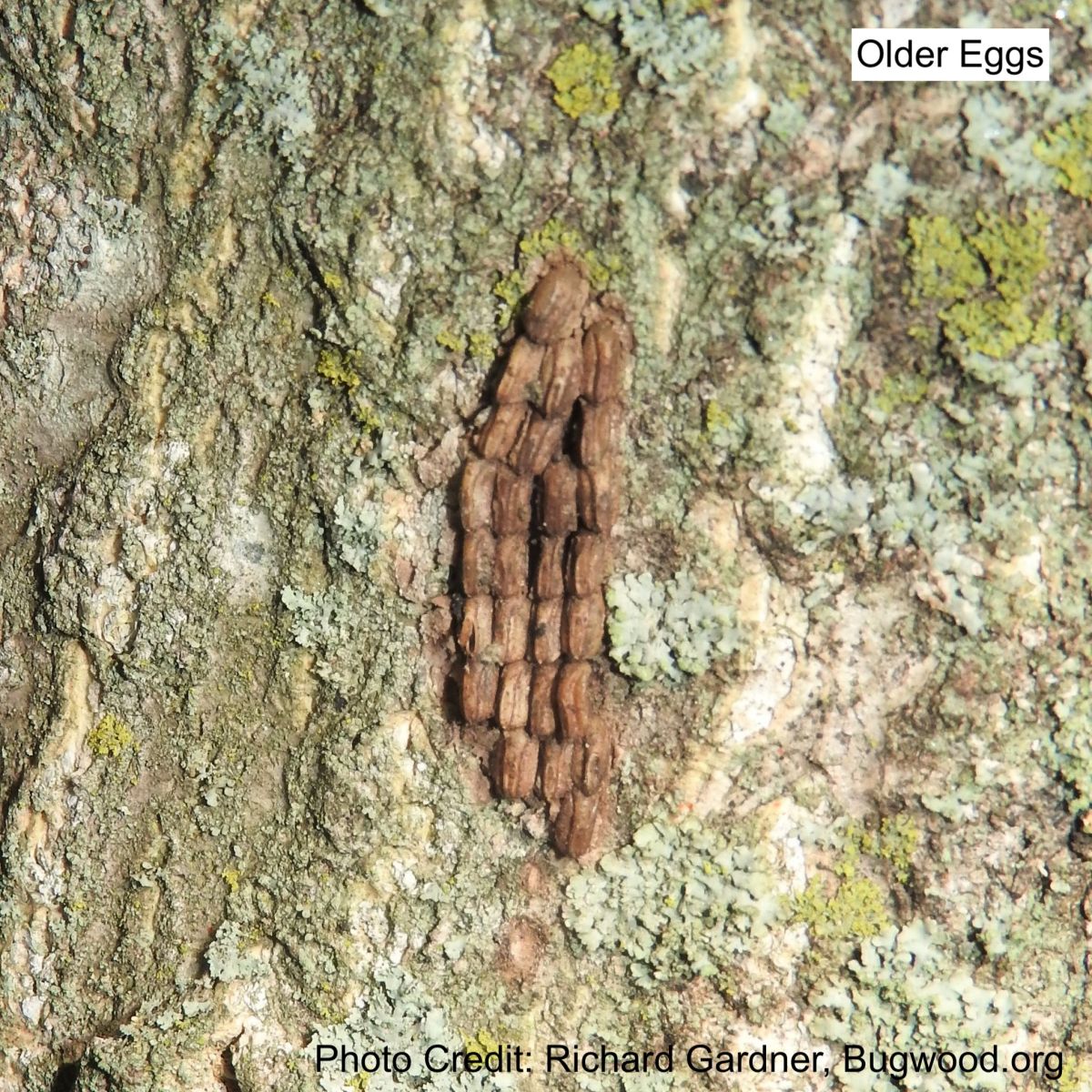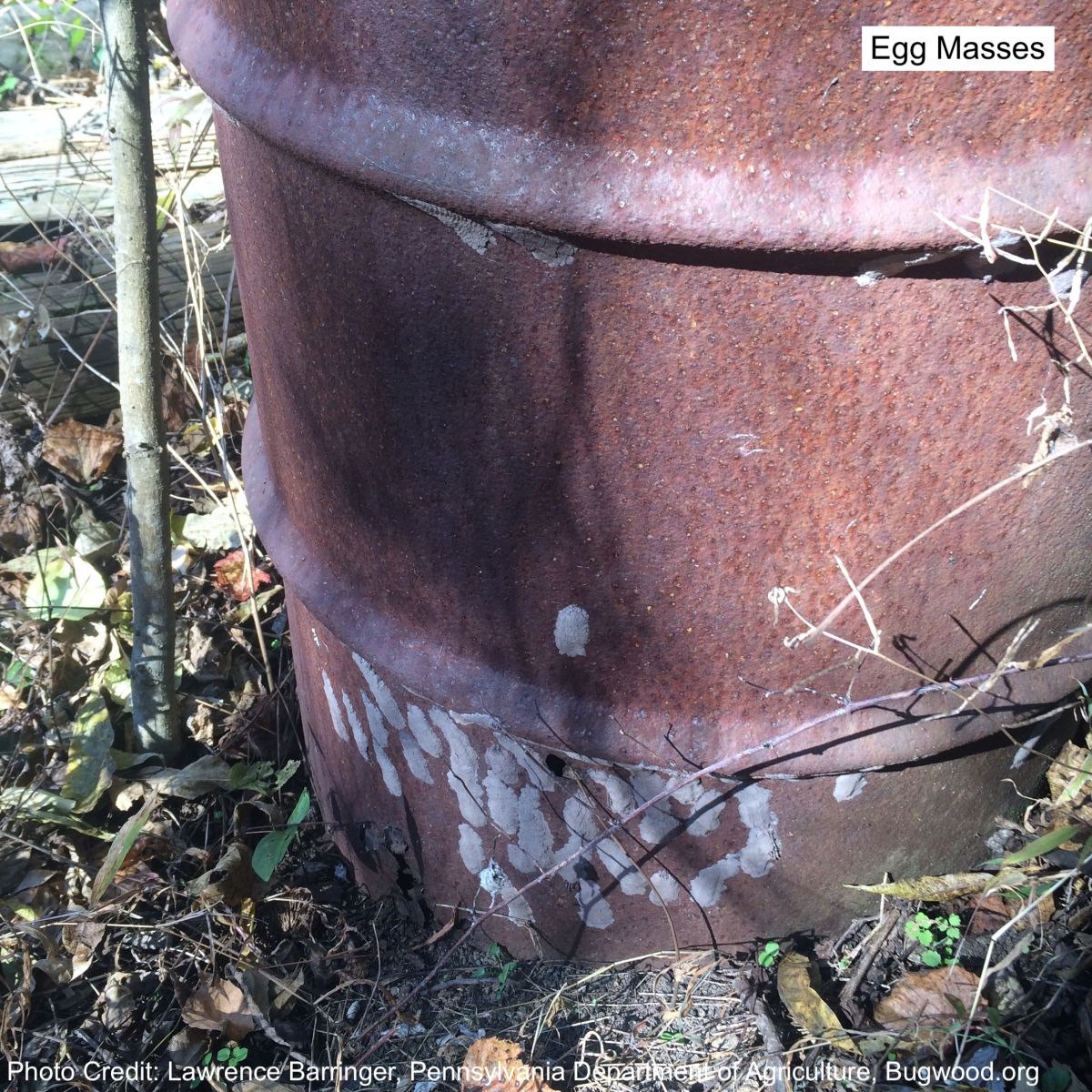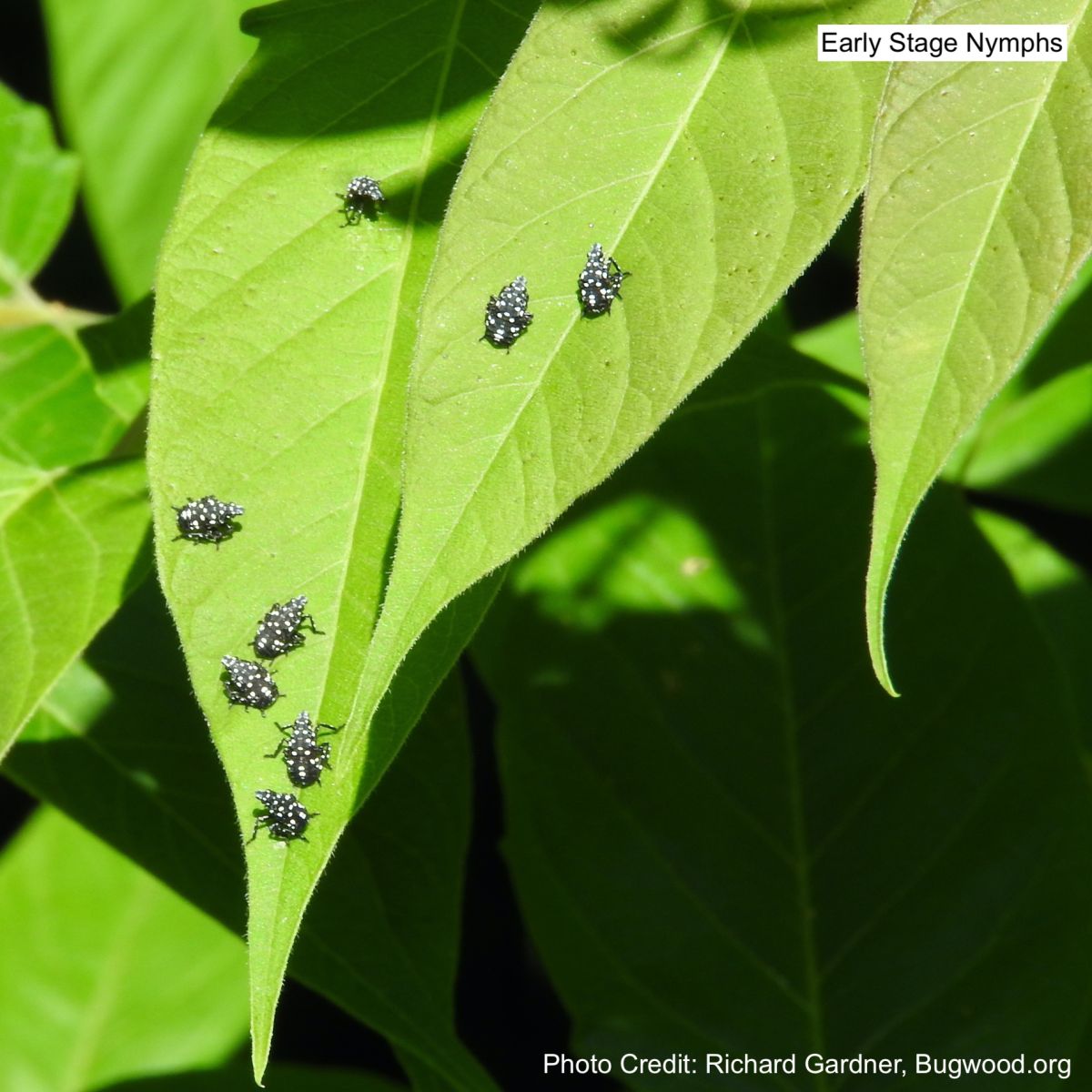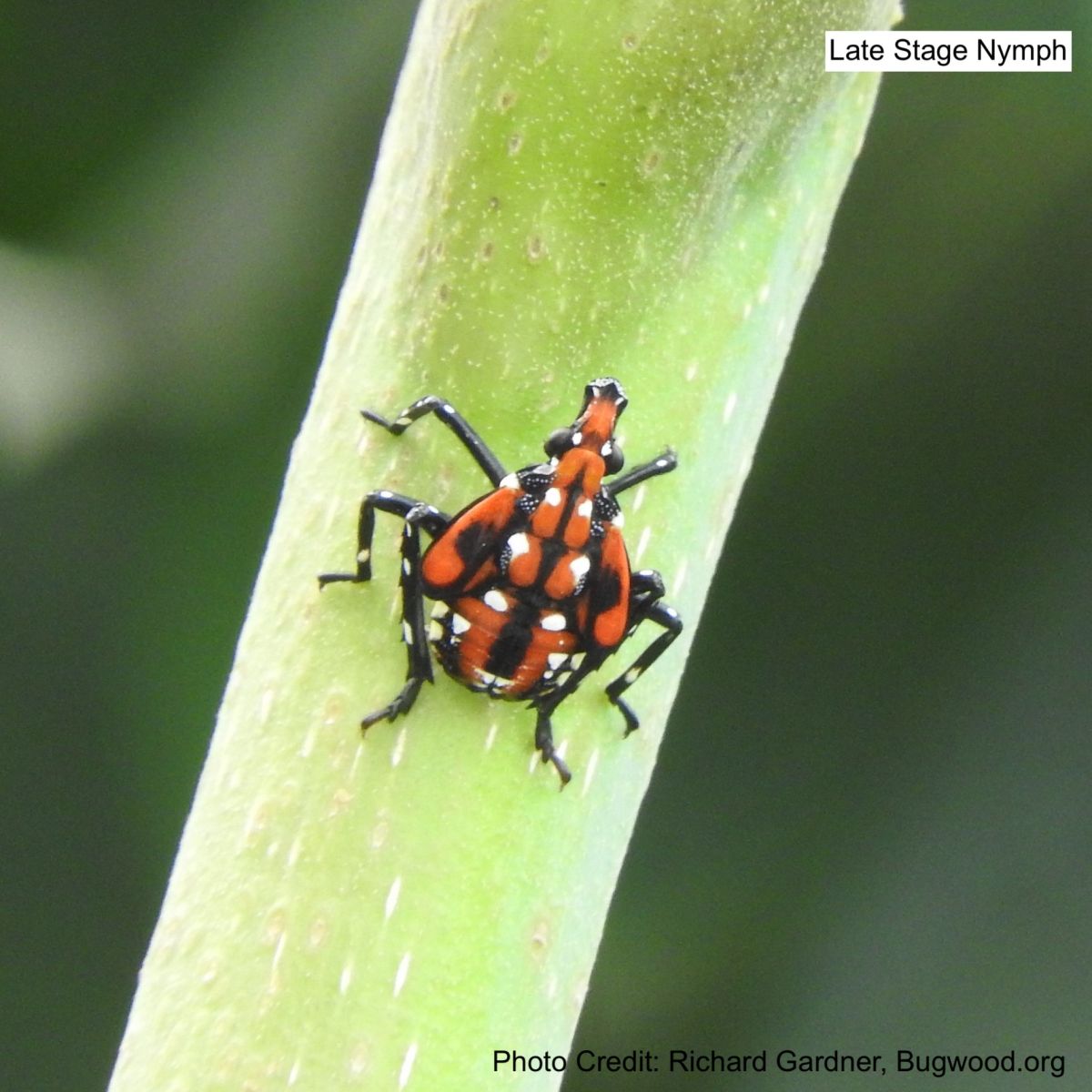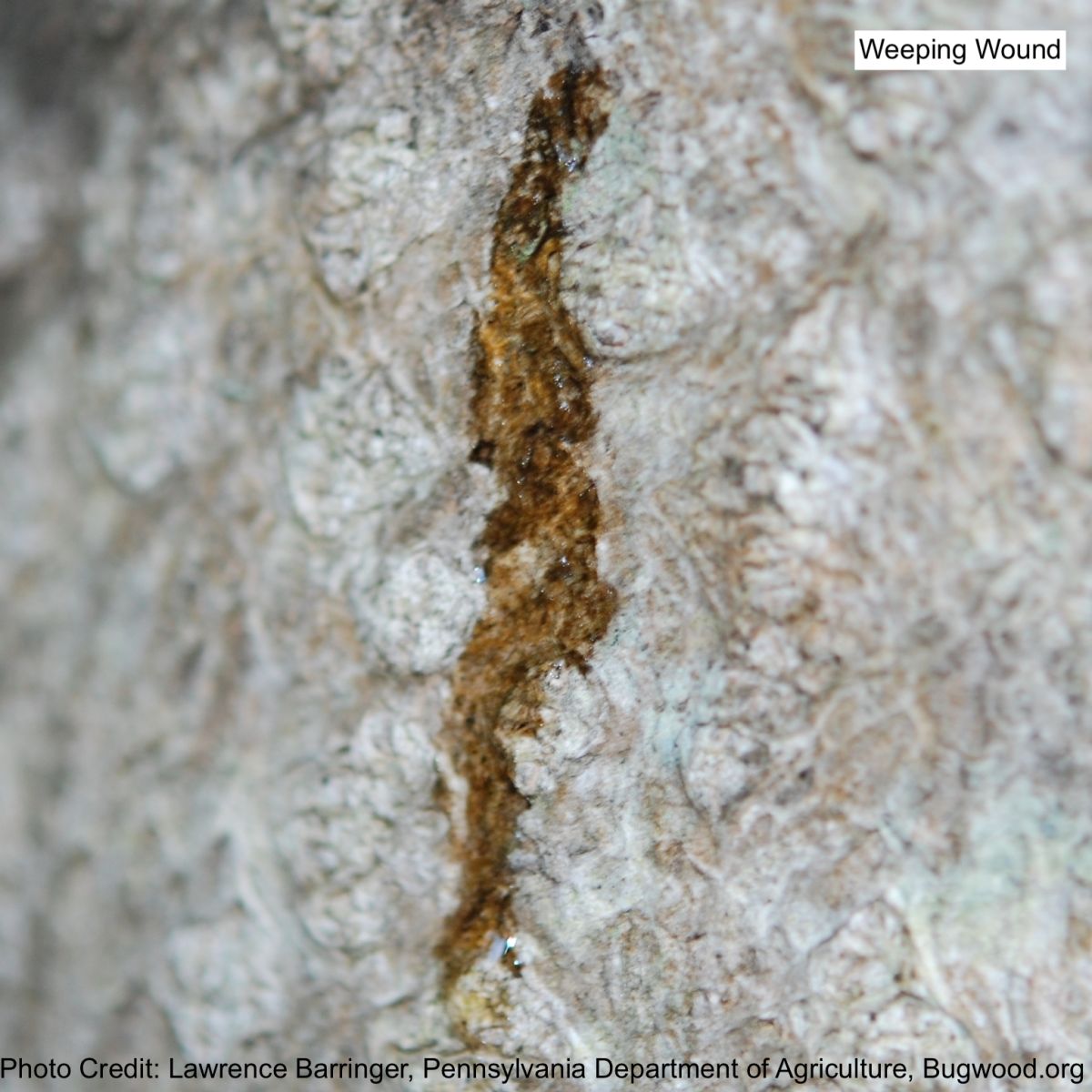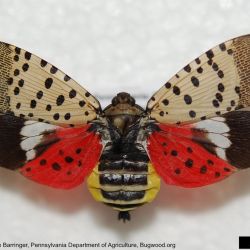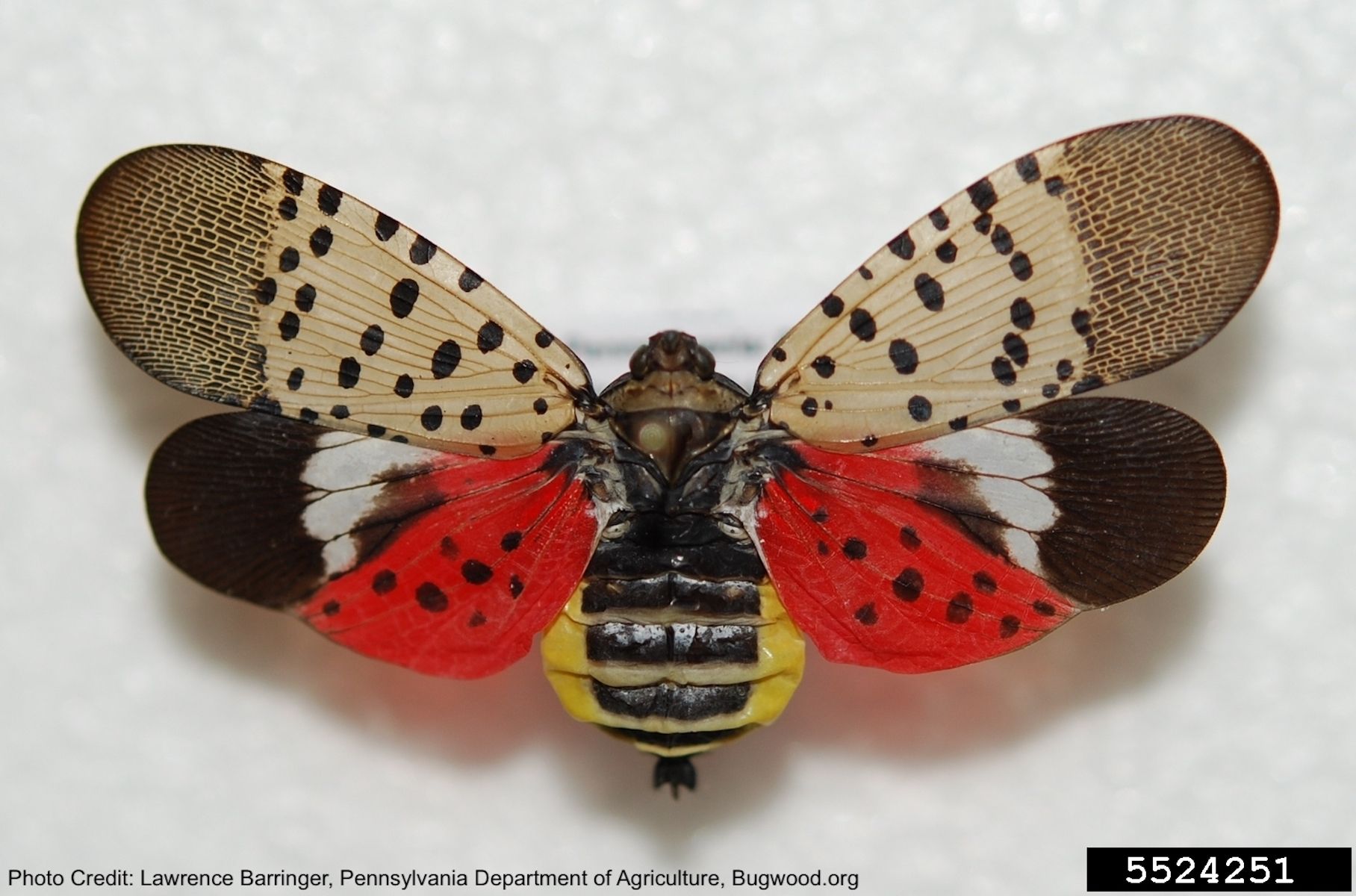
Priority: Prevent
General: The Spotted lanternfly is an invasive insect native to Asia which has spread across the United States but is not yet living in Canada. It causes damage to the wine, grape, & orchard industries. It was added to the regulated pest list in 2018 in order to prevent its introduction into Canada.
Size: 20 – 26 mm long & 12 mm wide
Colour: Front wings are light brown with black spots & the tips are speckled with black bands. Rear wings are red & have black spots & the tips are black with white bands. Abdomen is yellow with horizontal black stripes. Newly laid egg masses are brown & covered in a grey, waxy coating. Older egg masses lose the coating & look like brown seeds arranged in 4 – 7 vertical rows. Early stage nymphs are black with white dots. Later Stage nymphs are red on dorsal, black on ventral & have white dots.
Special Features: Eggs are laid on the host plant or adjacent surfaces such as lawn furniture, vehicles, or stones. Nymphs & adults tend to congregate in large numbers either at the base of the tree or in the canopy. They are easiest to locate at dusk & dawn when they are moving up & down the tree.
None.
Because of its distinctive & colourful appearance, there are no other insects in Canada that could be easily confused with the spotted lanternfly.
Where did it come from? The spotted lanternfly is native to China, India, Japan, & Vietnam.
Where does it live here? Spotted Lanternfly has not been found in Canada yet. It has, however, spread across the United States & is on the watch list to prevent introduction.
Reproduction: The spotted lanternfly reproduces by laying eggs on host plants & nearby surfaces.
When does it reproduce & mature? Eggs are laid in late summer & hatch in spring. Nymphs disperse after hatching & feed on a host plant once found. Adults mature in late July when they feed mainly on tree-of-heaven & grapevines.
Spreads By: Walking or flying short distances. Spreads long distances by human transport.
Species Type: Insect
- Spotted Lanternfly feeds by sucking sap from young stems & leaves of the host plant. Feeding damages plants & can lead to death, threatening wine, grape, & orchard industries.
- When the spotted lanternfly feeds on host plants, it exposes sap & excretes a substance called honeydew. This creates a “weeping wound” which attracts wasps & leads to rot & moldy fruit.
- Eggs & insect secretions (honeydew) cause damage to patio furniture, garden ornaments, & cars.
- Decreased enjoyment of outdoor activities.
- Check all plants and soil for invasive hitch-hikers. Check gear, tires, & shoes, especially if you visit an infested area. Do not store items or park under infested trees.
- Do not transport firewood. Burn it where you buy it.
- Remove tree of heaven, the preferred host for spotted lanternfly.
- Scrape any suspect insects or egg masses into a sealable container & immediately notify the Canadian Food Inspection Agency. Dispose only in the garbage, never compost invasives. Contact LRISS for specific recommendations.
Photo Gallery

